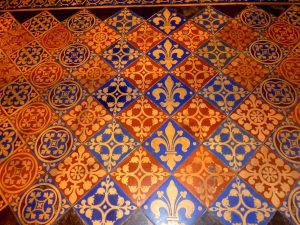Encaustic tiles are gaining popularity in today’s home designs, offering a delicate balance of unique artisan beauty and functionality based on an artform that’s thousands of years old.
“Encaustic” is a word derived from the Ancient Greek phrase “to burn,” which is how tiles were painted and enameled during that time. The process included painting tiles with a beeswax color that was then baked into place. In Medieval times, the process evolved into inlaid tile, which was composed of different colors of clay. The colors were inlaid into a pattern and then kiln-fired so that the design remained intact as it wore down over time.
Inlaid tile was commonly used in monastery and church architecture during the 13th through the 16th centuries. After disappearing for hundreds of years, it made a comeback during the Gothic Revival period.
Today, the term “encaustic tiles” is used somewhat loosely and can refer to anything from tiles made from cement similar to inlaid tiles to ceramic or porcelain tiles, which are less expensive versions made to look like encaustic tiles. While the former is more authentic, the latter two are typically more affordable.

How Are Encaustic Tiles Made?
The encaustic tiles today take about four weeks to make, depending on their design and thickness. The process is often done by hand by artisans, so the more complex the pattern, the longer it takes to manufacture. The tiles are typically made with cement blended with an alkaline binder, making them an economical alternative to cast ceramic tiles. Encaustic tiles made this way won’t crack or chip when exposed to freezing weather, so they’re great for exterior spaces, like patios, and they’re also very lightweight compared to other alternatives, which makes them suitable for kitchen backsplashes and bathroom floors.
A Great Alternative to Natural Stone
If you’re considering natural stone, encaustic tiles could be a great alternative because they look natural and incorporate unique designs with an artisan’s touch. For an added cost, some manufacturers will customize the tiles themselves, or you can customize the tile’s configurations to create your own unique design.
Are Encaustic Tiles a Better Option?
Encaustic tiles offer several benefits over their alternatives, including durability and unique designs. They’re porous, so it’s difficult — if not impossible — for algae and mildew to grow on them, they’re virtually maintenance free, they’re easy to clean, and they’re versatile.
Thinking of Doing Some Home Improvements? Get Home Remodeling Services in Round Rock, TX
If you’re thinking of redoing your kitchen, bathroom, or patio, contact Freccia Group to discuss your ideas. We’ve worked with homeowners across Central Texas on home improvement projects ranging from kitchen renovations to new home construction. Freccia Group has been providing homeowners in Round Rock with expert remodeling services that have earned us five-star reviews.
We believe that design should reflect how people live, so our home remodeling experts take the time to learn how you live and what you want from your home. Contact us to learn more.



